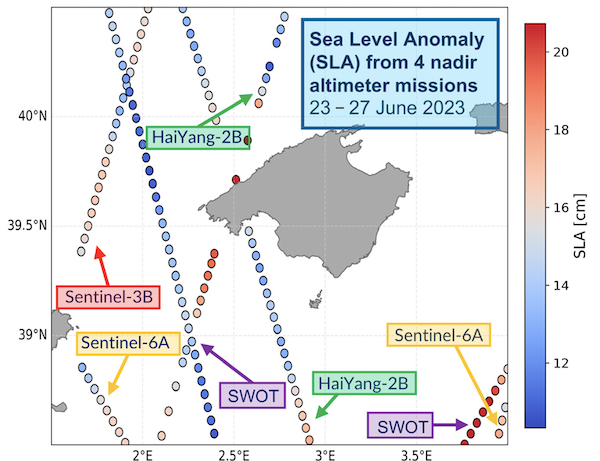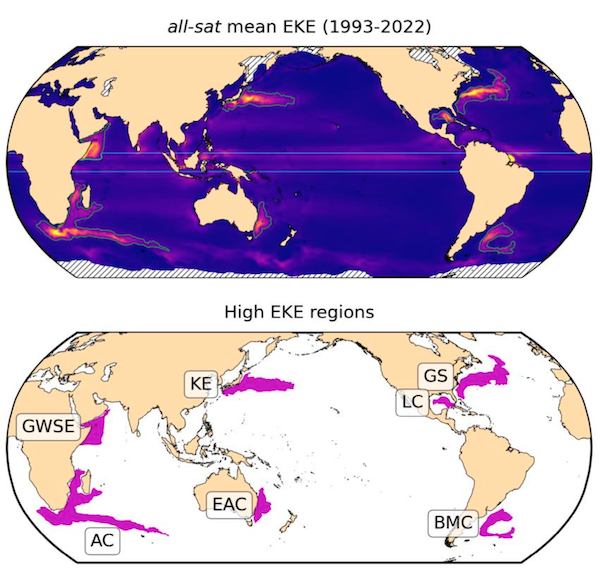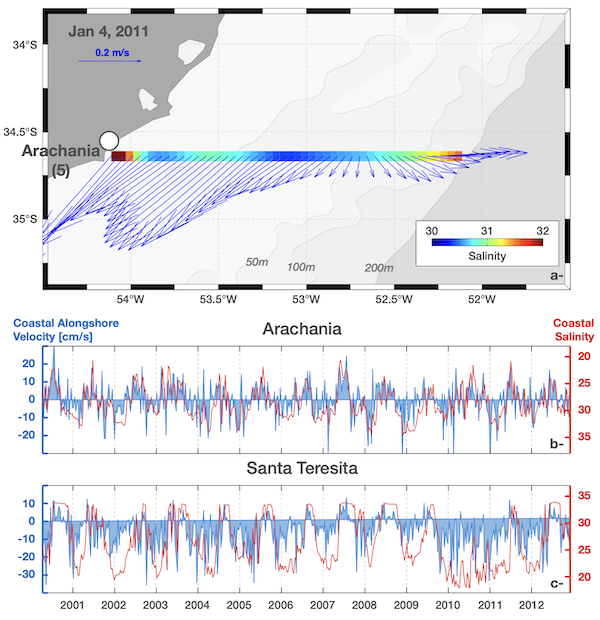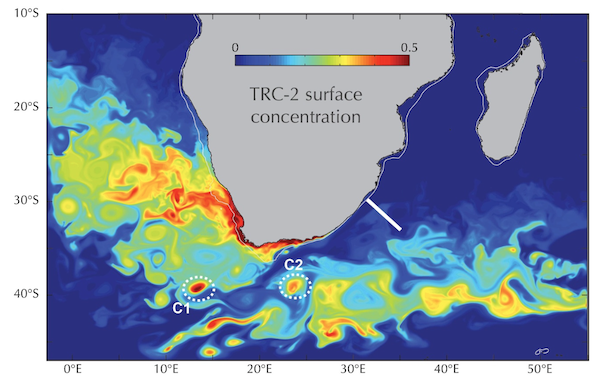 I am currently a Ramón y Cajal with double affiliation (IMEDEA / UIB, Mallorca, SPAIN) since summer 2022. Previously, I have been a Senior Research Associate at Oregon State University, in the CEOAS department since 2010.
I got my Phd from Georgia Tech (Atlanta) in 2010 and an engineering degree in Hydraulics from the ENSEEIHT (France) in 2005.
I am currently a Ramón y Cajal with double affiliation (IMEDEA / UIB, Mallorca, SPAIN) since summer 2022. Previously, I have been a Senior Research Associate at Oregon State University, in the CEOAS department since 2010.
I got my Phd from Georgia Tech (Atlanta) in 2010 and an engineering degree in Hydraulics from the ENSEEIHT (France) in 2005.

Abstract: Mesoscale coastal eddies are key components of ocean circulation, mediating the transport of heat, nutrients, and marine debris. The Surface Water and Ocean Topography (SWOT) mission provides high-resolution sea surface height data, offering a novel opportunity to improve the observation and characterization of these features, especially in coastal regions where conventional altimetry is limited. In this study, we investigate a mesoscale anticyclonic coastal eddy observed southwest of Mallorca Island, in the Balearic Sea, to assess the impact of SWOT-enhanced altimetry in resolving its structure and dynamics. Initial eddy identification is performed using satellite ocean color imagery, followed by a qualitative and quantitative comparison of multiple altimetric datasets, ranging from conventional nadir altimetry to wide-swath products derived from SWOT. We analyze multiple altimetric variables—Sea Level Anomaly, Absolute Dynamic Topography, Velocity Magnitude, Eddy Kinetic Energy, and Relative Vorticity—highlighting substantial differences in spatial detail and intensity. Our results show that SWOT-enhanced observations significantly improve the spatial characterization and dynamical depiction of the eddy. Furthermore, Lagrangian transport simulations reveal how altimetric resolution influences modeled transport pathways and retention patterns. These findings underline the critical role of SWOT in advancing the monitoring of coastal mesoscale processes and improving our ability to model oceanic transport mechanisms.

Abstract: Ocean mesoscale variability, including meanders and eddies, is a crucial component of the global ocean circulation. The Eddy Kinetic Energy (EKE) of these features accounts for about 90% of the ocean’s total kinetic energy. This study investigates if the global ocean mesoscale variability is becoming more energetic by analyzing 30 years of satellite altimetric observations. We use two observational products: one constructed from a consistent pair of altimeters and another including all available missions. Our results reveal a significant global EKE strengthening of 1–3% per decade. The intensification is concentrated in energetic regions, particularly in the Kuroshio Extension and the Gulf Stream, which show EKE increases of ~50% and ~20%, respectively, over the last decade. These observations raise new questions about the impact of the Gulf Stream strengthening on the Atlantic meridional overturning circulation (AMOC) and challenge existing climate models, emphasizing the need for improved representation of small-scale ocean processes.

Abstract: The wedge clam, Donax hanleyanus, inhabits sandy beaches in the subtropical and temperate regions of the Atlantic coast of South America. Its distribution spans over 20 degrees of latitude from Brazil to Argentina, with the southernmost part of its range being influenced by the Rio de la Plata (RdlP) estuary, which limits the southward larval expansion. We used an individual-based model (IBM) to assess the larval connectivity patterns of the wedge clam during the period 2000-2012. The IBM combines a 3D hydrodynamic model with a biological sub-model that considers larval mortality due to low salinity (< 7, and > 9) and sea surface temperature range (high > 30°C or low < 9°C). The main larval connectivity patterns were observed near the release/recruitment areas, suggesting a high potential for self-recruitment. Based on the IBM and adult abundance data, we also identified the likely source and sink areas within this metapopulation. Source beach areas were Navegantes and Cassino in Brazil (from 26.3° S to 34.34°S), Arachania in Uruguay (34.56°S), and Santa Teresita in Argentina (37.15°S). A low probability of larval transport towards the poleward limit of the species' distribution was observed, supporting an irregular recruitment pattern typical of sink populations located at the edge of the distribution range of metapopulations. Larval mortality due to warm or cold waters did not affect connectivity patterns for this subtropical species. Southward larval transport across the RdlP estuary (from Uruguayan to Argentine beaches) only occurred for larvae released on early January 2011, concurrently with the strongest La Niña year observed during the study period. In light of a changing climate, marked by potential increases in extreme La Niña events and a poleward shift of atmospheric circulation patterns over the South Atlantic, we anticipate a strengthening of larval transport across the RdlP and a subsequent poleward expansion of the species’ distribution range.

Abstract: This modeling study analyzes the circulation over the AgulhasBank (AB). It is suggested that the time mean circulation over the bank is primarily driven by the inflow of shelf waters from the northeastern region, and not by local forcing as previously postulated. Seasonal variations of the circulation and temperature and salinity fields are highly correlated with the atmospheric forcing. Currents shift inshore during the winter, returning to its original position during summer. The equatorward flow in the western AB, which includes a deep, previously unreported, countercurrent, strengthens during spring and summer and wanes during fall and winter. Tracer diagnostics and Eulerian mass balances reveal very energetics mass exchanges between the eastern AB and the Agulhas Current (AC). The AB Bight is the preferential site for these exchanges. Lagrangian diagnostic show 0.45 Sv of deep open‐ocean waters entrained into the bottom layer of the shelf. Cross‐shelf exchanges produce significant water mass transformations. Tides play an unexpectedly significant role on the AB circulation. Preliminary considerations suggest that shelf/open‐ocean interactions could have a significant impact on water mass conversions within the AC.